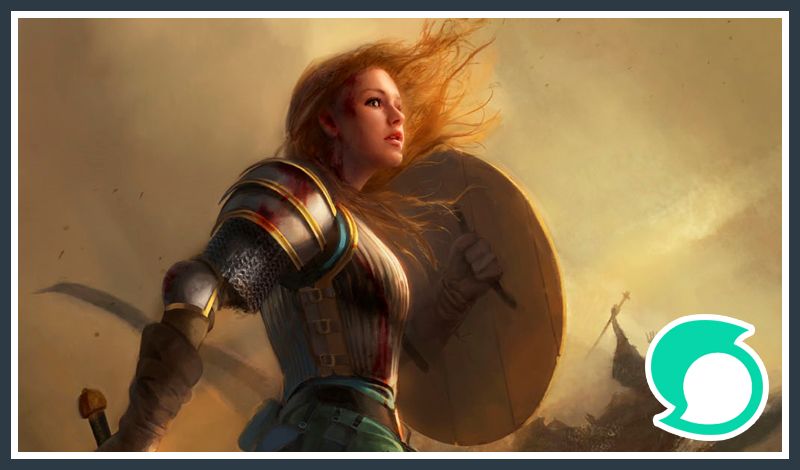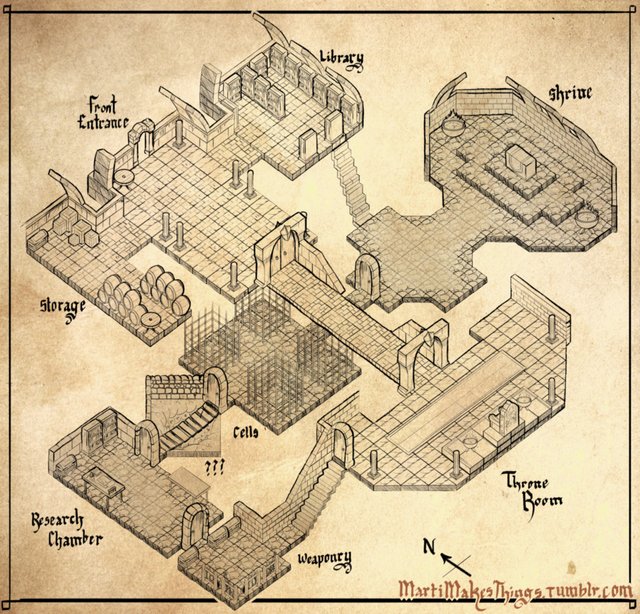6 Steps for Creating a Simple D&D Dungeon

I'm back.
I'm back in Dungeon Master mode. And I'm here today to help you design a simple, yet engaging dungeon in 6 simple steps.
1. Choose a Setting

If you're creating a one-off adventure, the sky's the limit on Step 1. You can put this dungeon in any setting you want. Is it Forgotten Realms? Is it Ravenloft? Is it a completely made-up universe?
Think about some of the features of the area, like:
- Climate
- Geography and terrain
- Inhabitants
- Creatures/monsters and their frequency in the area
Hammering out these details right away will allow you to easily create a world that feels consistent which really helps with immersion. Immersion is what makes a game fun, but immersion is built upon gameplay and rules. Perhaps the most important facet of gameplay you'll need to decide right away is the player level that this dungeon is suited to. Choose a level and then you can design challenges appropriate to that level.
If you're already running a campaign, then you've already chosen your setting, your job now will be to fit the parameters of your setting and the levels of the player characters.
2. Decide What Type of Dungeon You're Making

Step 1 was about general setting, but now we're getting specific. You need to decide what exactly this dungeon is. This includes it's location, history, inhabitants, etc.
Here are a few ideas to get you started:
- An archeological excavation of a temple that's unearthed an ancient evil
- An underwater labyrinth that's rumoured to hold treasures beyond imagination
- An abandoned military keep that's been taken over by a group of bandits who are pillaging the nearby villages
- A trap-filled kobold stronghold
- A city's elaborate sewer system that serves as the secret hideout for the Thieves' Guild
- A mine outside a major urban center that's facing a work stoppage due to the belief that it's become haunted (this is what I'm working on right now)
3. Come up with a Story

Now that you have the setting and concept for your dungeon, it's time to get into the details of its story. How did this dungeon come to be? Why is it full of enemies/monsters/treasures?
4. Build it

I'm not talking about mapping out your dungeon. That's usually my last step, though at this stage it might be useful to have a rough sketch of the layout. It depends on what works best for you.
What I'm talking about is designing the "rooms" of the dungeon and the challenges the players will face in those rooms. I put "rooms" in quotations, because these areas of the dungeon don't necessarily have to be literal rooms, but they are distinct (usually) locations with unique challenges (always).
I'm personally fond of Johnn Four's Five Room Dungeon model. It's a simple guide to creating a short, but exciting dungeon. I prefer short dungeons. I find that they become a grind after too many hours. Most players like freedom and dungeons tend to be like putting the gameplay on railroad tracks, at least to an extent. Players want to be free, so don't keep them trapped for too long!
Here are the five rooms:
1. Entrance And Guardian - It's great to begin a dungeon with a simple challenge. The "guardian" doesn't need to be a literal monster or creature preventing your entrance. It could be a complex lock or puzzle. Whatever it is, something should prevent players from simply waltzing into the dungeon.
2. Puzzle Or Roleplaying Challenge - Give your players a problem that can't be solved with steel or attack spells. Maybe they need to convince an NPC to guide them down the correct tunnel or perhaps they need to solve a riddle to open a magical gate.
3. Red Herring - Ah yes. What would a story be without a great plot twist? This is the turn: the moment that you can turn everything upside down. Maybe the villain isn't who you thought he/she/it was. Maybe the players get betrayed by an NPC ally. Maybe the entire dungeon was a trap. You're the boss! Be creative.
4. Climax, Big Battle Or Conflict - The players come face to face with the main challenge of the dungeon. This usually comes in the form of a boss monster, but it could be a challenge of any other kind.
5. Plot Twist - Sometimes it's fun to pull the rug out from under the players in the denouement. This is a tactic that will really make your dungeon special and memorable. The twist doesn't need to be a new challenge to face before leaving the dungeon (though it could be). The twist can be a big revelation that will totally change your players perspective on what has happened. It could be an unexpected treasure that ties this dungeon to your main storyline. It could be a magical trap that resurrects the challenge from room 4. As always, be creative!
5. Create Your Map

Many non-artists are intimidated by this step. But you don't need to be an artist to come up with a simple layout. Unless your story demands it, you don't need to make this map a prop that your players will see. But you do need to know the space of the dungeon and how the rooms connect and relate to each other.
6. Bring it to Life

This is the fun part. Bring your party together and have a great adventure!
Bonus Tip
Make sure your dungeon feels alive. There should be a logic to its layout that fits with its story. Furthermore, the actions of the players should be felt through the entire dungeon. I've played with Dungeon Masters who didn't know how to do this and it really took me out of the experience.
When a DM doesn't make a living dungeon, it will feel like a series of disconnected rooms with disconnected challenges. To put it frankly, its a bore because I can't get invested in a story I don't believe.
Here are a few ideas to keep your dungeon alive:
- If players are too loud in Room 3, it could prematurely awaken the monster in Room 4
- If players rest in a dungeon, even if they barricade the entrances to their room, it's likely that they'll be found by enemies. They should awaken to find their exits blocked by their adversaries
- Make sure the terrain and constraints of the space affects the players. If the ground is uneven, movement should be difficult, if the space is very confined, everybody may be at a disadvantage in combat, etc.
I hope these steps and tips were helpful. Now go and have some fun!
~Seth

Thanks so much for sharing this. My boyfriend and I totally want to get a D&D campaign going! :)
Have you ever played?
Thanks for this detailed guide.
No problem!